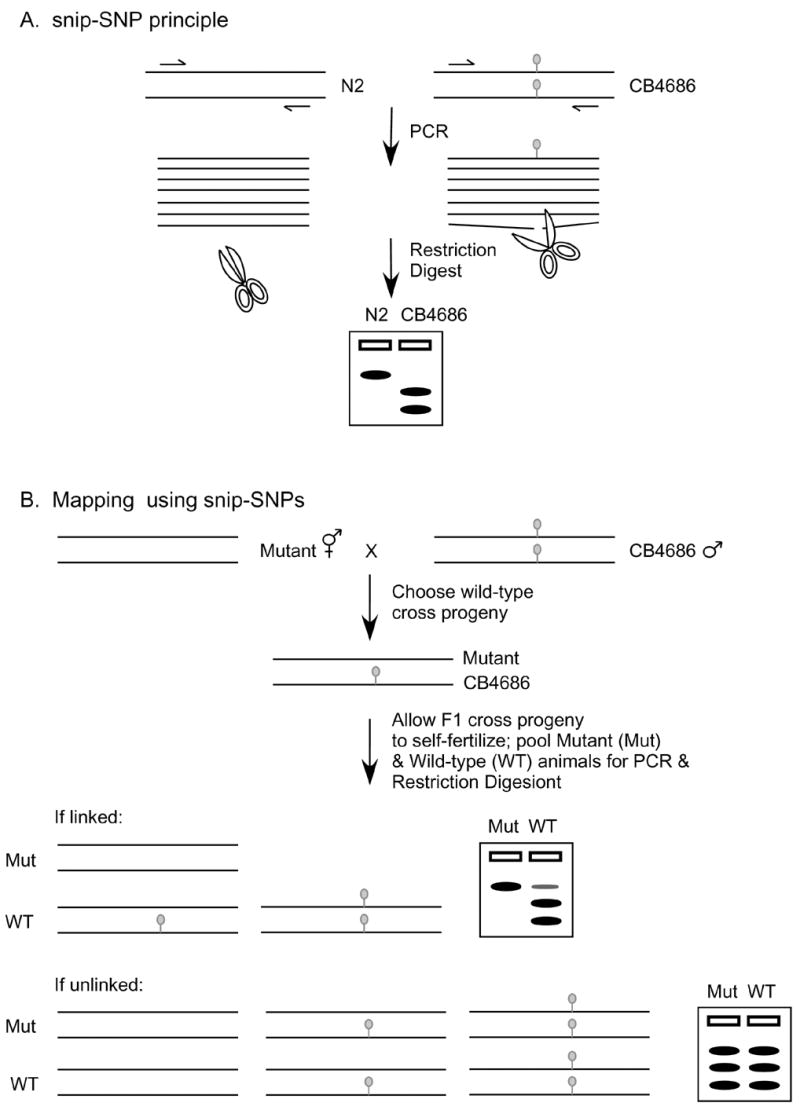Figure 8.

Mapping using single nucleotide polymorphism (SNP) markers. (A) A particular restriction site (grey circle) is not present in the N2 Bristol strain but is present in the CB4686 Hawaiian strain. DNA from each strain can be distinguished by PCR amplification of the genomic region followed by restriction digest (snip) and gel electrophoresis. (B) The method for mapping using snip-SNPs is shown. In this example, Bristol hermaphrodites harboring a recessive mutation are crossed with the Hawaiian males and wild-type heterozygous hermaphrodite cross progeny are selected. The chromosomes segregate during self-fertilization and the second generation offspring are separated based on phenotype into mutant and wild-type populations. DNA from the two populations is amplified at various SNP sites as in (A) with only one site shown here. If the mutation is linked to the SNP site, there will be a bias for Bristol DNA and not CB4686 in the mutant population. If the mutation is elsewhere in the genome or unlinked, the chromosomes with the SNP site with assort randomly and both Bristol and CB4868 DNA will be present and detected by snip-SNP analysis in the mutant and wild-type populations.The techniques and reagents available for studying C. elegans have made it possible to define the role that the HLH-8 protein plays in nematode development, but there is also clinical relevance to the work. In humans, Twist mutations cause birth defects that include craniofacial and digit malformation from defective bone development [90]. Despite the absence of bones in C. elegans, they do have a conserved Twist pathway that is useful for other aspects of mesoderm development. At this stage, multiple genes are known downstream of HLH-8 that have human homologs that cause similar craniofacial syndromes. Therefore, the information learned from the nematode will be relevant for understanding human mesoderm development and birth defects.
